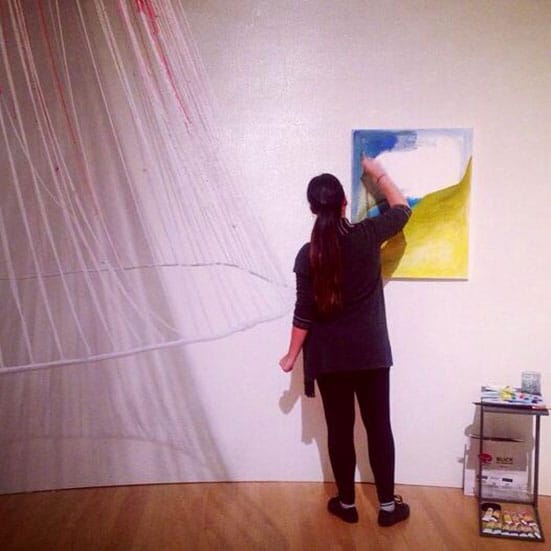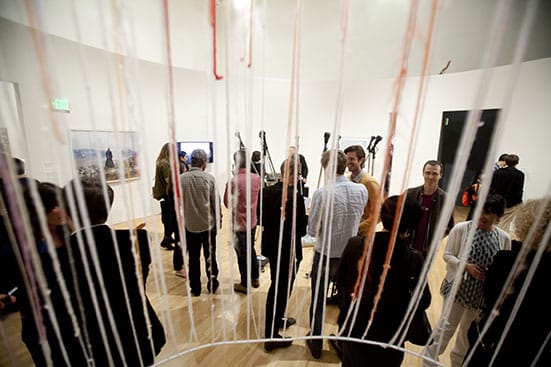On the occasion of participating in a performance by Zheng Guogu at the Yerba Buena Center for the Arts in San Francisco on 24 October 2014, as part of the Opening Night Party for an exhibition entitled Landscape: The Virtual, The Actual, The Possible?
A facet of painting that has thus far consistently resided firmly in the back of my mind is that which concerns authorship. The general consensus is that the hand of the artist will both be, and be significant, in the work as if by some great metaphysical force of the Painter prevalent in every painted image in history. A painting will naturally belong to whoever made it, they tell us in art school. One tutor consistently reminds me to keep my ‘habits’ in check, to do what is best for the specific painting I am working on at the time; ‘Don’t try to make ‘’your’’ painting,’ she says.
This advice I accepted at face value as it had proven to help me make more interesting paintings and avoid unconscious branding. However, in the current landscape where Paintings are not paintings, the nuance and definition of ‘making’ is undercut.
I recently participated in a performance in a San Francisco gallery that incorporated the live application of paint on surface. As it was explained to me, the Artist (no, not me) will describe an image in Cantonese to the Translator, who will then communicate the image in English to the Student Painter (me) who will then paint said described image while VIPs circulate through the exhibition. It is undeniable that the process gives an inordinate amount of power and potential to the painter, someone who is not even considered an Artist. As I received a slew of unwarranted instruction from Very Important People, my somewhat maniacal mantra went, ‘I am the one holding the brush.’
Was the Painting in fact the entire collaborative process, and my own decision making on canvas merely a small but necessary component to something bigger/better/more contemporary/Art? If I were to be a good student and follow the art school logic, I would have to define who made the painting so I may look for this mysterious, but always present, hand. Well, then, who was The Maker in this situation?
Neither these questions, nor hierarchy in art, are unique to this experience. They have been, however, made more pertinent and disconcerting to me. Contemporary painting seems to be standing on a house of cards resting on authorship. I actively try to avoid thinking about the relevance of traditional painting today as, practically and logically, I would come to a conclusion that would if not terminate then at least stall my practice. Simply by the act of making a traditional painting, an artist is taking a stance on contemporary art in general thereby forcing painters into the conversation. Is that not contemporary enough?
Chanah Haddad

Chanah Haddad in a performance by Zheng Guogu at the Yerba Buena Center for the Arts in San Francisco on 24 October 2014.

Chanah Haddad in a performance by Zheng Guogu at the Yerba Buena Center for the Arts in San Francisco on 24 October 2014.

Chanah Haddad in a performance by Zheng Guogu at the Yerba Buena Center for the Arts in San Francisco on 24 October 2014.